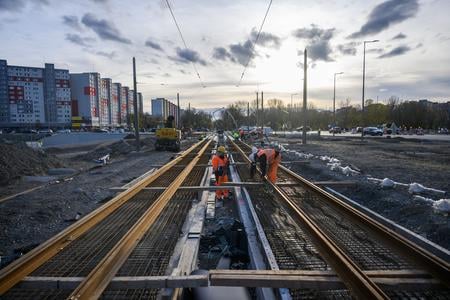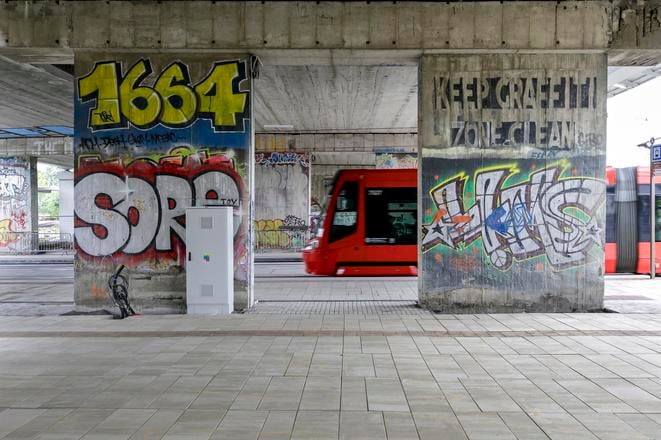July saw the long-awaited opening of Bratislava’s tramline extension into Petržalka – the city’s largest neighbourhood and one of the most densely populated housing developments in central Europe. The monolithic, utilitarian tower blocks lining the southern bank of the Danube remain one of the standout sights for visitors to Bratislava Castle.
Commuters can now travel from the city centre to the new Slnečnice residential area in just over 12 minutes. It marks the most significant extension of Bratislava’s tram system since 2015, when the renovation of Starý most, one of the bridges across the Danube, was completed and the first steps of the current tram line were laid into Petržalka.
Until now, living deep in Petržalka often felt like living on an island. A myriad of bus connections to the centre existed – typically delivering commuters to the city’s fringes, such as Zochova or Nivy – but not into the core. With this new extension, the tram now cuts directly through the heart of the city, linking Petržalka with the centre as seamlessly as more established boroughs like Rača or Dúbravka.

The development was met with fanfare from Mayor Matúš Vallo, who oversaw the project’s final stages. Approximately 3.9 km of new double-track tram line now runs from Jungmannova to Janíkov dvor, forming a continuous route with the older section between Starý most and Jungmannova. The extension introduces seven new tram stops and four bridges over the Chorvátske rameno canal – with a fifth bridge for pedestrians and cyclists still under construction.
While some work remains on the tram stops – including shelters, displays, and lighting – the essential infrastructure is complete. With this milestone passed, city planners are likely already turning their attention to the more ambitious goal of connecting the distant Vrakuňa district to the network.
What does this mean for Petržalka?
In 2015, New York Times writer Lisa Schwarzbaum visited Petržalka and painted a bleak portrait of the area’s Socialist-era architecture and cultural stagnation:
“There is no hipster irony in panelák living, no retro cool. No economic disadvantage is implied by the address, either, nor, at this point in the game, any political ideology. The place just is, extraordinary and mundane, gargantuan and invisible.”
Ten years on, are things starting to shift? Could this new connectivity signal the start of a cultural revival or even creeping gentrification? Let’s explore what’s on offer at each of the seven new tram stops.


 The tram at its final stop, Južné mesto, in Bratislava’s Petržalka borough on Sunday, 27 July 2025. (source: TASR - Dano Veselský)
The tram at its final stop, Južné mesto, in Bratislava’s Petržalka borough on Sunday, 27 July 2025. (source: TASR - Dano Veselský)